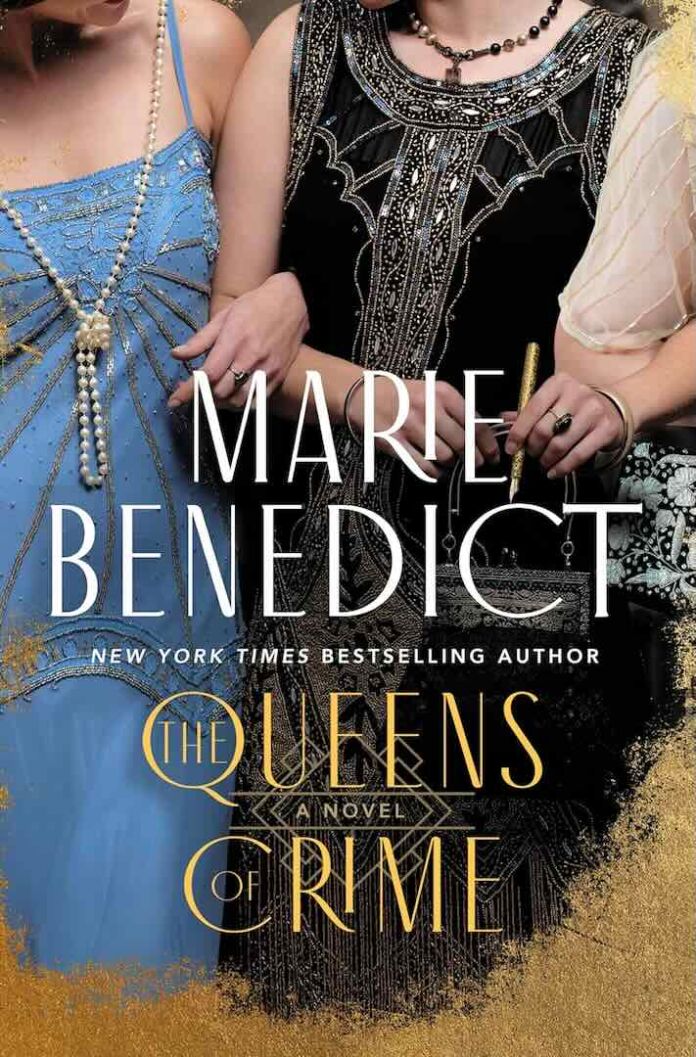Marie Benedict’s latest historical fiction masterpiece, “The Queens of Crime,” weaves an intricate tapestry of mystery, feminism, and literary history. Set in 1930s London, the novel brings together five legendary female mystery writers in a thrilling investigation that blurs the lines between fiction and reality. While the story occasionally struggles with pacing in its middle section, Benedict’s meticulous research and compelling characterization create an engrossing narrative that both entertains and illuminates.
A Tale of Literary Legends and Real-World Mystery
The story follows Dorothy L. Sayers and her fellow female mystery writers as they band together to solve the murder of May Daniels, a young English nurse found strangled in France. The case bears uncanny similarities to their own fictional locked-room mysteries, complete with seemingly impossible circumstances and carefully planted red herrings. Benedict skillfully intertwines the investigation with themes of female empowerment, professional recognition, and the complexities of friendship.
Stellar Character Development
The Queens Come Alive
Benedict’s portrayal of these literary giants is nothing short of masterful. Each woman emerges as a distinct personality:
- Dorothy L. Sayers – Brilliant but carrying her own secrets, serving as the group’s unofficial leader
- Agatha Christie—Recently recovered from her own mysterious disappearance, bringing unique insights
- Ngaio Marsh – Sharp-tongued and modern in her outlook
- Margery Allingham—Young and eager to prove herself
- Baroness Emma Orczy—Aristocratic but surprisingly down-to-earth
The dynamic between these five women forms the heart of the novel, with their differences creating both tension and strength.
Writing Style and Historical Detail
Benedict’s prose shines brightest in her period details and dialogue. The author captures the essence of 1930s London with remarkable precision, from the smoky atmosphere of detective clubs to the changing social dynamics of the era. Her description of the Detection Club’s initiation ceremony, complete with ceremonial robes and a skull named Eric, is particularly vivid.
The Mystery Elements
A Complex Puzzle
The central mystery of May Daniels’ murder is expertly crafted, with multiple layers that keep readers guessing. Benedict incorporates elements familiar to fans of Golden Age detective fiction while adding modern sensibilities and social commentary. The resolution is satisfying, though some readers might find certain coincidences a bit too convenient.
Strengths and Notable Aspects
- Rich historical context and period atmosphere
- Complex, well-developed female characters
- Engaging mystery plot with multiple layers
- Strong themes of female empowerment and friendship
- Excellent integration of real historical figures and events
Areas for Improvement
- Pacing occasionally slows in the middle sections
- Some secondary characters could be more fully developed
- A few plot points rely heavily on coincidence
- The resolution might feel rushed to some readers
Historical Accuracy and Research
Benedict’s attention to historical detail is impressive. Her author’s note clearly delineates fact from fiction, explaining how she used real events as inspiration while taking creative liberties to craft a compelling narrative. The portrayal of the Detection Club and its members appears well-researched and authentic.
Themes and Social Commentary
Female Empowerment and Professional Recognition
“The Queens of Crime” effectively explores the challenges faced by women writers in the 1930s, particularly in the mystery genre. The concept of “surplus women” after World War I and society’s treatment of unmarried professional women adds depth to the narrative.
Friendship and Solidarity
The evolving relationships between the five Queens form a powerful subplot, showing how women can support and strengthen each other in the face of societal barriers.
Comparison to Other Works
Fans of Benedict’s previous works, such as “The Mystery of Mrs. Christie” and “The Personal Librarian,” will find similar attention to historical detail and strong female characters. The book also pairs well with other historical mysteries featuring real literary figures, such as Jess Montgomery’s “The Widows” or Nicola Upson’s Josephine Tey series.
Similar Books to Consider:
- “The Seven Husbands of Evelyn Hugo” by Taylor Jenkins Reid
- “The Paris Library” by Janet Skeslien Charles
- “The Rose Code” by Kate Quinn
Impact and Relevance
While set in the 1930s, many of the themes remain relevant today, particularly regarding gender equality in professional spaces and the power of female solidarity. The book serves as both an entertaining mystery and a reminder of how far women have come—and how far we still have to go.
Target Audience
This book will particularly appeal to:
- Historical fiction enthusiasts
- Mystery lovers, especially fans of Golden Age detective fiction
- Readers interested in feminist historical perspectives
- Fans of literary figures like Dorothy L. Sayers and Agatha Christie
Final Verdict:
“The Queens of Crime” is a compelling addition to Marie Benedict’s bibliography. While not without its flaws, the novel successfully combines historical fiction, mystery, and social commentary into an engaging narrative that will satisfy most readers.
Pros
- Excellent character development
- Strong historical research
- Engaging mystery plot
- Powerful themes
Cons
- Some pacing issues
- Occasional reliance on coincidence
- A few underdeveloped subplots
Recommendation
“The Queens of Crime” is highly recommended for readers who enjoy historical mysteries with strong female characters and social commentary. While some familiarity with the real-life authors might enhance the experience, it’s not necessary to enjoy this well-crafted tale.
This is a book that reminds us of the power of female friendship and the importance of standing up for one’s place in the world, wrapped in an engaging mystery that would make its protagonists proud.





